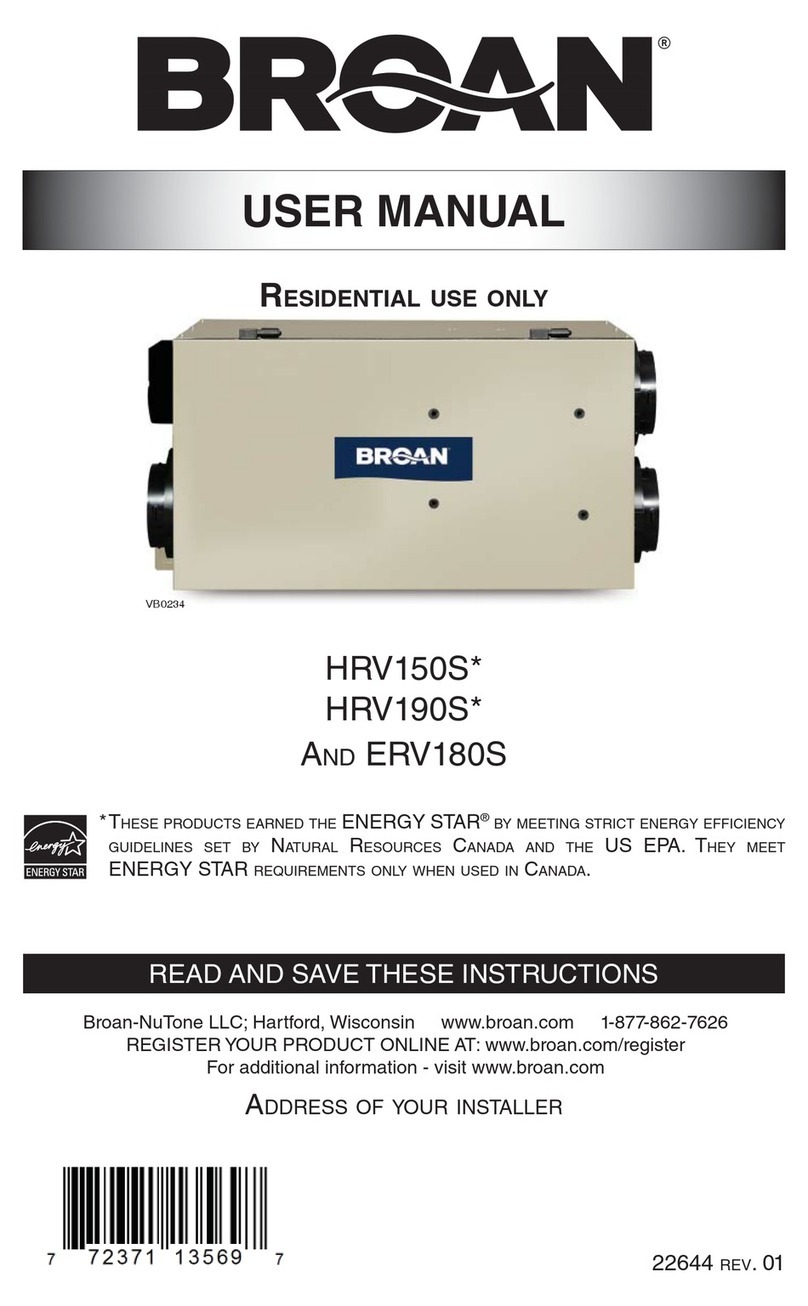
3
TABLE OF CONTENTS
1. T YPICAL INSTALLATIONS ......................................................................................................................... 4-5
1.1 FOR HOUSE .................................................................................................................................................. 4
1.1.1 FULLY DUCTED SYSTEM............................................................................................................................................4
1.1.2 CENTRAL DRAW POINT.............................................................................................................................................4
1.1.3 SIMPLIFIED INSTALLATION...........................................................................................................................................4
1.2 FOR HIGH-RISE DWELLING .............................................................................................................................. 5
1.2.1 FULLY DUCTED SYSTEM ...........................................................................................................................................5
1.2.2 CENTRAL DRAW POINT ............................................................................................................................................5
2.INSTALLATION..................................................................................................................................... 5-12
2.1 INSPECT THE CONTENT OF THE BOX .................................................................................................................. 5
2.2 UNIT PREPARATION ......................................................................................................................................... 5
2.3 LOCATING THE UNIT ........................................................................................................................................ 6
2.4 HOW TO HANG THE UNIT ..............................................................................................................................6-8
2.5 PLANNING OF THE DUCTWORK .......................................................................................................................... 8
2.6 INSTALLING THE DUCTWORK AND REGISTERS ................................................................................................. 8-10
2.6.1 FULLY DUCTED SYSTEM...........................................................................................................................................8
2.6.2 CENTRAL DRAW POINT............................................................................................................................................9
2.6.3 SIMPLIFIED INSTALLATION........................................................................................................................................ 10
2.7 CONNECTING THE DUCTS TO THE UNIT..............................................................................................................11
2.8 INSTALLING 2 EXTERIOR HOODS...................................................................................................................... 12
2.9 INSTALLING TANDEM®TRANSITION KIT .............................................................................................................. 12
3.CONTROLS...................................................................................................................................... 13-16
3.1 BOOTING SEQUENCE ..................................................................................................................................... 13
3.1.1 ERV100SP UNIT BOOTING SEQUENCE ................................................................................................................... 13
3.1.2 ERV100S UNIT BOOTING SEQUENCE ..................................................................................................................... 13
3.2 ERV100SP UNIT INTEGRATED DEFROST CONTROL........................................................................................... 14
3.3 ERV100S UNIT INTEGRATED CONTROL........................................................................................................... 14
3.4 SETTING EXTENDED DEFROST FOR ERV100S UNIT.......................................................................................... 14
3.5 ELECTRICAL CONNECTION TO WALL CONTROLS ............................................................................................ 15-16
3.5.1 ELECTRICAL CONNECTION TO VT8W MAIN WALL CONTROL ........................................................................................16
3.5.2 ELECTRICAL CONNECTION TO VT7W MAIN WALL CONTROL ........................................................................................16
3.5.3 ELECTRICAL CONNECTION TO VT4W MAIN WALL CONTROL ........................................................................................16
3.5.4 ELECTRICAL CONNECTION TO VT6W MAIN WALL CONTROL ........................................................................................16
3.5.5 ELECTRICAL CONNECTION TO OPTIONAL AUXILIARY WALL CONTROLS ............................................................................16
4.ELECTRICAL CONNECTION TO THE FURNACE ...............................................................................................17
5.SPEED SELECTION .................................................................................................................................17
6.WIRING DIAGRAM ..................................................................................................................................18
7. B ALANCING THE UNIT ..............................................................................................................................19
7.1 WHAT YOU NEED TO BALANCE THE UNIT .......................................................................................................... 19
7.2 PRELIMINARY STAGES TO BALANCE THE UNIT .................................................................................................... 19
7.3 BALANCING PROCEDURE ................................................................................................................................ 19
8.SERVICE PARTS............................................................................................................................... 20-21
9.TROUBLESHOOTING .......................................................................................................................... 22-24




























